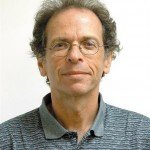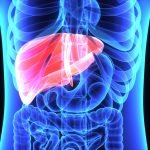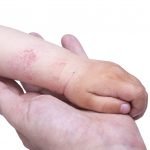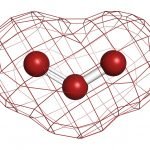Case Studies: Homeopathic Care for Cardiovascular Disease
Joe Kellerstein, DC, ND
Cardiovascular disease is a leading killer and, justifiably, it provokes anxious thoughts. It is in situations like these where we might instinctively believe we need to use “strong” medicine. In conventional medicine, this means doses of dangerous drugs that require tight control and radical surgeries. Naturopathic medicine has moved in an analogous direction. We ramp up dosage on cardiovascular-related nutrients. These days, the darling of the field is chelation therapy. Patients are comforted that something “massive” is being done about the horror of their situation.
“Massive” invokes feelings of confidence and power and that everything possible is being done. Being an ordained coward myself, I am certain that should I be confronted by a barking Chihuahua, the thought of an automatic weapon might be comforting. But is “massive” alone the best strategy?
“Massive Care”
Hahnemann gave us a medical approach that is uniquely precise both in its application and assessment. Precision is what really counts. If we could just hone our skills in Materia Medica, case taking and studying the old homeopathic literature, a wealth of life-saving knowledge can be acquired. It does not require you to be intuitive or “out there” in your approach – just a good “medical observer,” as Hahnemann points out.
I certainly support the use of in-depth lifestyle coaching and supportive nutrients; however, homeopathic intervention will often quickly and decisively improve even severe cardiovascular disorder.
In my years of practice, I have found it necessary to supplant massive therapies with a sense of “massive care.” Generally, this means frequent visits with patients, where they are carefully evaluated for progress and offered psychological support.
The accompanying case studies offer some highlights and teaching points from the last few years. Sometimes the needed keynotes are dropped like pearls from heaven, and sometimes we need to diligently mine them out. Our frame of mind is to proceed on the belief that we will find them.
Case Study 1
Mrs. C presented to my office six years ago. A slender lady in her mid-70s, she is a long-time, heavy smoker. Her face bore many deep lines, every one of them screaming her determination. Several months before, her right foot had begun to discolor at the toes. Now they were clearly blackened, and she was in a lot of pain. Her family doctor was set on amputation after the failure of more conservative measures. She was neither willing to give up her foot or her smokes.
Without asking a single question, Mrs. C gave me a gorgeous description of the problem: About 2 a.m. every morning she would be awakened from intense burning in the foot. She paced the floor with this pain and used warm wraps to relieve it. (Yes! Nice easy ones do exist!) I prescribed Ars 10m, one dose now and one dose hourly as needed for the nightly discomfort. In this situation, we faced a very aggressive problem and the posology needed to outpace the disease. I asked that she report back in two days. About a week later, Mrs. C called to inform us that the pain was much improved. At a follow-up visit one month later, she was thrilled to show me two very normal-colored feet. In fact, the pain diminished on the first night, even though multiple doses were used on a nightly basis. Within a few days, she thought her toes were looking better and actually presented me with the serial videos of the change in her feet. Some time later, there were two or three relapses (after all, she was still smoking), all of which responded to increasing potencies of the same remedy in the same way. I have not directly heard from this lady for some years now, except for the indirect greetings that come from the many people she has referred.
Case Study 2
Mr. J was a referral from Mrs. C. A tall, lanky yet strong-looking man in his mid-50s, Mr. J is a mechanic, very busy and very physically involved, both with his profession and with outdoor life. Some five years ago, he noticed that his stamina was diminishing. The last two years saw a marked change that was enough to alarm him and force a trip to his medical practitioner, and then a cardiologist. He was diagnosed as having a late-stage mitral valve prolapse. Surgery was the only answer. Mr. J’s brother had that same surgical procedure, with poor results, so Mr. J was hesitant to have the surgery.
His symptom was this: After only mild exertion, he was forced to stop due to shortness of breath. That’s it. Extensive questioning around concomitants and modalities yielded no further definition. I switched questioning techniques and asked him to walk me through a bad day with this MVP. He talked about work that he had done on a car and how often he needed to stop, and that he would cough. I then questioned him about the context in which he coughed most. No response. I asked for another instance of a real bad episode and, again, it was when working on a car. Ultimately, I verified that the cough was worse in the very stuffy environment of the garage and, in fact, when severely coughing, he needed to go outside for a walk. Recently, he was very sensitive to stuffy and warm environments, and was more emotionally sensitive to weeping. I prescribed Puls 200, one dose now and to be repeated as needed with the episodes of cough. Within 10 days, the cough was rare. One month later, Dr. J’s stamina was better than it had been in years, and this is still the case after three years and a lot of hard work.
 Joe Kellerstein, DC, ND graduated as a chiropractor in 1980 and as an ND in 1984. He graduated with a specialty in homeopathy from the Canadian Academy for Homeopathy, and subsequently lectured there for two years. He also lectured in homeopathy for several years at the Canadian College of Naturopathic Medicine; for eight years at the Toronto School of Homeopathic Medicine; for two years at the British Institute for Homeopathy; and for the past five years, he has lectured for his own post-grad course in homeopathy, Homeopathy by the Book (homeopathybythebook.com). Kellerstein’s mission is the exploration of natural medicine in a holistic context, especially homeopathy and facilitating the experience of healing in clients.
Joe Kellerstein, DC, ND graduated as a chiropractor in 1980 and as an ND in 1984. He graduated with a specialty in homeopathy from the Canadian Academy for Homeopathy, and subsequently lectured there for two years. He also lectured in homeopathy for several years at the Canadian College of Naturopathic Medicine; for eight years at the Toronto School of Homeopathic Medicine; for two years at the British Institute for Homeopathy; and for the past five years, he has lectured for his own post-grad course in homeopathy, Homeopathy by the Book (homeopathybythebook.com). Kellerstein’s mission is the exploration of natural medicine in a holistic context, especially homeopathy and facilitating the experience of healing in clients.









